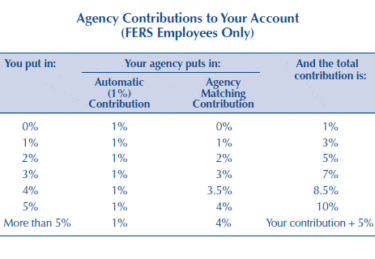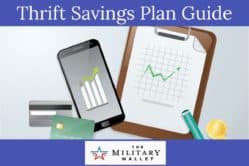The Thrift Savings Plan (TSP) is an excellent investment option for military service members and eligible civil service members. It allows you to save for retirement through either a traditional account like a 401k with pre-tax contributions or a Roth account with post-tax contributions. While the TSP has limited investment choices, it offers some of the lowest-cost investment funds available.
Key Differences Between Military and Civil Service Thrift Savings Plans
The Thrift Savings Plan is available to military and civil service members. While the plan functions similarly for both groups, there are some differences:
- Dual-status technicians (Guard or Reserve members) can simultaneously have military and civil service TSP accounts.
- Combining TSP accounts is possible only after ineligibility to contribute to one or both, with considerations for tax-free zone contributions.
- Civil service members receive automatic government matching contributions, unlike military members who are not in the Blended Retirement System (BRS).
Military TSP Matching Contributions Are Exclusive to BRS Members
As a general rule of thumb, military members in the High 3, Final Pay, or REDUX retirement plans are not eligible for matching TSP contributions. This policy was changed on January 1, 2018, with the introduction of the Blended Retirement System. Those who joined before this date and did not switch to BRS will not receive matching contributions. Although each branch secretary could theoretically allow matching, it would require reallocating limited personnel funds, impacting salaries, bonuses, and overall force strength.
Under the BRS, members can take their TSP and matching contributions with them after 2 years of service. Previously, you had to retire from the military to access your TSP funds.
Let’s take a look at government matching contributions, then dive into why military members don’t get them.
Military TSP Matching Contributions
This chart shows how the Thrift Savings Plan matches contributions for civil service employees under the Federal Employee Retirement System (FERS). This structure is the same for military members under the BRS plan.
![]()
Civil service and BRS members receive a 1% automatic government contribution to their TSP, regardless of their contributions. For the next 2% of their pay they defer, they get an additional 1% match, and for the following 2%, they receive a 0.5% match per percentage point, totaling a maximum government contribution of 5% (1% automatic + 4% matching). It’s important to note that matching contributions apply only to base pay, excluding any incentive pay, special duty pay, or bonuses.
Although members can contribute more than 5% of their pay to their TSP, only the first 5% will receive matching contributions. The Thrift Savings Plan has various contribution limits, such as the elective deferral limit and the maximum annual addition limit.
Most Military Members Don’t Get Matching TSP Contributions
You might wonder why you don’t get matching TSP contributions if you have been in the military for several years. This is because matching contributions are generally not available to those who were members before the creation of the BRS in January 2018. However, the secretary of each armed forces branch can authorize matching contributions for service members in critical specialties. These contributions are typically given as incentives to service members who agree to serve six years on active duty in those specialties. For more information, check with your branch’s personnel office or consult a financial advisor to understand your eligibility and the specific benefits available to you under the BRS.
TSP Matching May Impact Your Investment Decisions
Using the TSP as a primary source of investment makes sense if you receive matching contributions because it effectively increases your savings with minimal effort, providing an immediate return on your contributions. Additionally, the TSP offers low-cost investment options, making it a cost-effective way to grow your retirement savings over time.
Most military members should be eligible to participate in the Thrift Savings Plan and an IRA. When deciding between investing in the TSP or another investment opportunity, though, you should consider all your options.
Which is better? It depends on your situation. Compare a TSP to an IRA to understand the differences in contribution limits, tax benefits, investment options, and withdrawal rules, helping you decide which retirement plan best suits your financial goals and needs.
The bottom line is to focus on available opportunities, not just matching contributions. The Thrift Savings Plan is a great opportunity regardless of matching. Take advantage of it now, and you’ll appreciate the substantial balance in your TSP account in 20 to 30 years.




Comments:
About the comments on this site:
These responses are not provided or commissioned by the bank advertiser. Responses have not been reviewed, approved or otherwise endorsed by the bank advertiser. It is not the bank advertiser’s responsibility to ensure all posts and/or questions are answered.
Qasim Naji says
Thank you. and I am active duty. Also, I noticed a month contribution is missing on my TSP Quarterly statement.
Brittany Crocker says
If you’ve verified your settings in myPay, definitely reach out to one of those offices or phone numbers!
Qasim Naji says
Hello, I joined the Army in July 2019, and I started my TSP in July 2020. I have not seen any matching contribution. I have been contributing 10% of my basic pay from July 2020. when will I start seeing my 5% matching contribution?
note: I have completed two years of service.
Brittany Crocker says
Hey there, are you active-duty? If so, I’d reach out to your Defense Military Pay Office (DMPO) or local finance office. If you’re in the Army National Guard or Army Reserve, call 1-888-DFAS411 or 1-888-332-7411, or talk to your administrative support to see what’s going on!
Orlando Costa says
If I started my TSP account on 2019, do I automatically get the 5% match if I contribute 5% ? or do I need to wait 2 years before I get the 5% match?
Ryan Guina says
Hello Orlando,
My understanding is that military members will begin receiving an automatic contribution of 1% of their base pay from the DoD beginning 60 days after entering the military.
Members will begin receiving matching contributions up to an additional 4% of their pay (5% total) once they have completed two years of service (starting at 2 years, 1 day of service). The maximum DoD contribution is 5% if the service member is contributing 5% of their basic pay.
I hope this helps!
John says
Where can I find out which job’s “MOS’s” in the ARMY are receiving the match contributions? The reason I ask is because I am in a MOS that is part of a manatory reclass.
Ryan Guina says
Hi John, The best thing to do is speak with someone in your retention office, human resources, or personnel (or equivalent office in your branch of service). They should be able to provide that information or at least point you in the right direction. I wish you the best, and thank you for your service!
kumalo says
With the new changes with the army deciding to implement the match making changes for those whose do not retire in the army. Where I need clarification is what happens to those who had been contributing before the changes, do we have a match for contributions we made 3years ago? Thanks in advance…
Ryan Guina says
Hello Kumalo, The new retirement plan doesn’t go into effect until 2018. There won’t be any matching TSP contributions until that time. When the matching TSP contributions do take place, they will only happen for contributions going forward, and will not be retroactive to previous TSP contributions. Additionally, you would need to opt in to the new retirement system to be eligible to receive matching contributions.
Robert Smith says
Getting ready to retire from the military and a Government Service position is an option I’m looking into. I have a question along the above article that I can’t seem to find an answer for. Do FERS Civil Service members (GS emloyees) have the same option as Active Military to invest in both the Traditional IRA and the “ROTH IRA” within TSP for FERS Civil Service members? I’ve heard there is the above mentioned matching for FERS Civil Service members, but they might not have the ability to invest in ROTH IRA within their TSP. Can you answer this question or share a link I could go read to get my answer? Thanks in advance.
Al says
@ Robert Smith all FERS government employees may contribute to both a traditional IRA and the Roth TSP. If you invest at least 5% of income into your Roth TSP, you will receive the 5% match in your traditional TSP account.
If you mean to ask if one may invest in both the traditional TSP and Roth TSP, the answer is yes.
Pnlopea says
In the information provided in your article, I did not discover an answer to the question of why the Fed Govt does not pay the 1% into an automatic TSP account for military members. Since the tax-payer is the ultimate guarantor of all Fed govt retiree pensions, etc, this makes no sense. The tax-payer would put military members at the top of the list of employees that should receive any additional benefits; it seems absurd that civilian paper pushers receive this benefit and active duty military members deployed multiple times into combat zones and FOB assignments do not. Please do not use the reasoning that the commander would need to make cuts to force strength due to cost. Congress or executive branch could easily provide a program to match the civilian program w/o deducting from military budgets! Thank you
Ryan Guina says
Pnlopea, I clearly stated that the Secretary of each branch of the service can authorize TSP matching contributions under certain circumstances, but the funds would come out of the overall budget and cuts would have to be made elsewhere. Could the law be changed? I’m sure it could. But with the military downsizing and cutting back on other benefits, that would be a tough sell. If this is something you feel strongly about, then I recommend contacting a military lobbyist group to see if they have plans to lobby for this change, or would consider it among their top priorities for military and veterans benefits. You could also contact your Congressional Representative in regard to sponsoring a bill that would provide funds for the military to provide matching contributions for all servicemembers.
Additionally, a hybrid retirement plan combining a reduced pension along with TSP contributions by the government is being considered as a replacement for the current retirement system (all current members would be grandfathered in, but could opt for the hybrid retirement plan if they wish). Here is more information: 2015 Military Compensation and Retirement Modernization Commission Recommendations.
USPS Letter Carrier says
You incorrectly state: “Civil Service members receive…”
That should read FERS members. Civil Service members are part of CSRS or Civil Service Retirement System and do not receive any matching
Ryan Guina says
Thanks for your comment. The article stated Agency matching for TSP participants was limited to FERS civil service members. However, each subsequent mention of civil service members did not state FERS. I have more clearly stated this so there is no confusion.
Anton Ivanov says
Good point.
Anton Ivanov says
Great info – I came here with the questions as to why military members don’t get automatic matching TSP contributions. I now have my answer! Agreed that an all-service matching contribution program would be very expensive, but it would be a great selling point for new recruits or those think about re-enlisting.
Ryan Guina says
It would be a great selling point for new recruits, but I think that if the military ever goes to a program where the match TSP contributions for all members, then they would do it by reducing retirement benefits, either by reducing the multiplier for each year of service, or they would do away with it altogether. I don’t see how the military could afford to do both. Here are most recent proposed changes to military retirement plan benefits from the Defense Business Board. It’s not a pretty proposal for anyone serving under today’s generous retirement program!